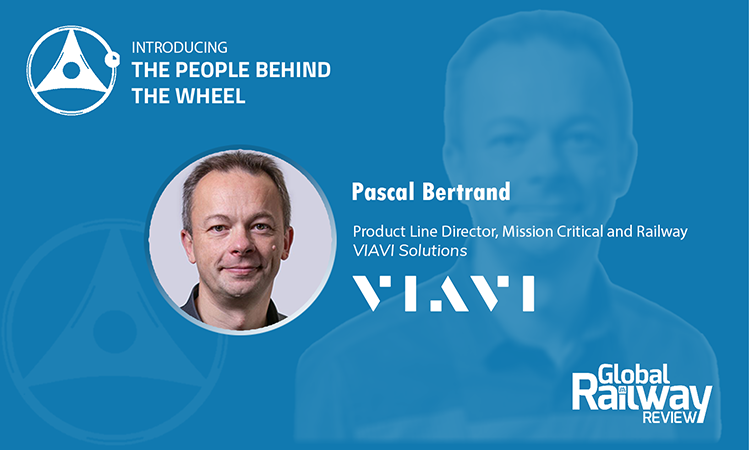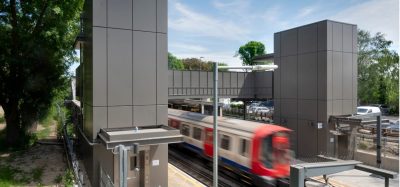The people behind the wheel: Pascal Bertrand’s story, VIAVI Solutions
Posted: 7 November 2024 | Pascal Bertrand - VIAVI Solutions | No comments yet
In the latest instalment of ‘The people behind the wheel’ series, Pascal Bertrand, Product Line Director, Mission Critical and Railway at VIAVI, discusses his role in driving innovation in railway communications technology and the challenges and opportunities shaping the future of the industry.


Can you tell us a bit about your role at VIAVI and how it contributes to the rail industry?
VIAVI Solutions is a global leader in communications test and measurement and optical technologies and I’m responsible for Product Line Management in the Mission Critical & Railway Business Unit, created in 2022, following the acquisition of Expandium (2020) and Comtest Wireless (2022).
As Product Line Director, I head the Product Line Management team at VIAVI. We are collectively responsible for developing the EVOIA range of passive monitoring and active testing solutions for Mission Critical Operators in railway, public safety, maritime and airports.
For example, EVOIA Assure is designed to provide Railway operators and system integrators with the tools that both measure Railway European Rail Traffic Management System (ERTMS) quality of service from end-to-end, and perform troubleshooting tasks, in an all-in-one solution.
What motivated you to pursue a career in network and communication technology, specifically within the rail and transport sectors?
I started my career in 1994, at the very beginning of GSM deployment. At that time, the challenge was to deploy radio networks as fast as possible to manage high increases in traffic, which typically doubled every six months.
In 2002, I crossed over from mobile phone (GSM) networks to railways and GSM-R technology, as there was a growing need to replace the former 70’s analog solution. This was an exciting time, which brought greater safety and new challenges, such as ensuring that Railway Emergency Calls could be initiated in less than two seconds.
What challenges have you encountered while working with rail communication and signalling technologies, and how have you addressed them?
The move to use European Train Control System (ETCS) level 2 to run trains meant that we needed to extend our railway telecom monitoring to include railway signalling too. As the two areas were often in different operational departments; the main challenge was much less around new technology and much more focused on the human aspect. For example, we spent quite a bit of time helping both telecom and signalling teams to better understand each other’s role, environments and challenges.
Has your experience in the rail sector changed your perception of how technology drives the industry?
Success in the railway sector requires energy and a friendly, helpful and approachable attitude, and from that, the technology developments will naturally follow”
Yes. As previously mentioned, I started my career in the mobile network operator (MNO) environment, where there is extremely high pressure to develop technology as fast as possible with or without concrete use cases.
In my opinion, this is why 5G is failing in its global adhesion, as apart from speed, it does not bring any new use case for MNO subscribers.
However, it’s the opposite in railways, where the process always starts by defining the use case requirement before choosing which solution will best fit the request. This second way of working matches my way of thinking and why I am happiest in the railway environment.


Credit: VIAVI
What would you consider the top three highlights of your career at Viavi in relation to the rail industry?
There have been a lot of positives about my role, from being part of industry initiatives, learning new technologies, as well as supporting and helping customers to make the most of them. The latter has involved a fair bit of international travel. For example, this year, I’ve been working in France, Spain, Italy, Egypt and Australia.
What advice would you give to someone interested in a career at the intersection of technology and the rail sector?
I’m not sure how well qualified I am to advise anyone! But if I was to say anything, it would be to say that it’s about people before it’s about technology. Success in the railway sector requires energy and a friendly, helpful and approachable attitude, and from that, the technology developments will naturally follow.
How do you see technological innovation, such as 5G and fibre optics, shaping both your role and the rail industry over the next five years?
The ability to use 4G and 5G/ FRMCS private networks should help to make railways safer and more efficient – and that’s a good thing for everyone. However, the timescale for that is currently set to 2035 and beyond.
If we look more specifically at the next five-years, then we’re probably talking about customers considering how they will be securing GSM-R equipment and know-how until 2040, as well as making internal progress towards the FRMCS deadlines. This is why for example, we are offering customers long-term GSM-R maintenance agreements.
What technological advancements do you hope will become more widely adopted in the rail industry to improve communication, safety, or efficiency?
Technological innovation is the solution to answer future railway needs. For example, replacing the obsolete GSM-R network is a first step, followed by exploring new use cases offered under the FRMCS banner, such as video, Automatic Train Operation and more…
But let’s not forget, there is also a new topic that railway will have to manage – cybersecurity. This important subject must not be underestimated, given the international conflict context.
Right now, the EU is defining the NIS2 specifications to make the railway environment cyber-safe. For sure, 5G and its components hold some of the keys to make the railway domain cyber proof.









